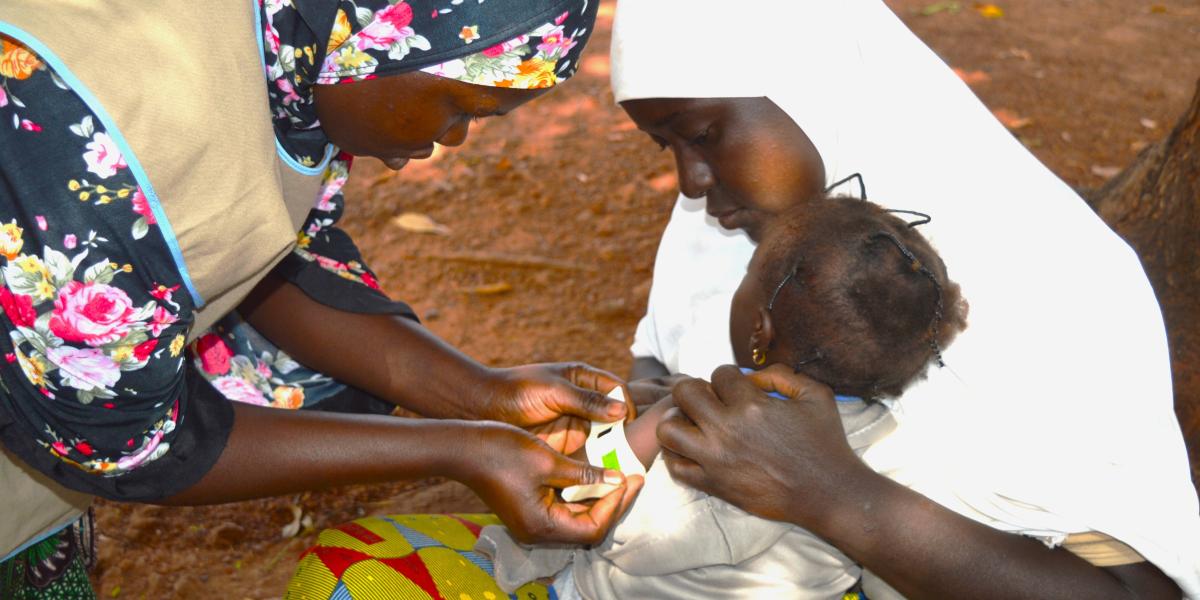Reducing Malnutrition and Increasing Access to Health Care in Mamissa
Since 2015, Zoumana Konaté has served as technical director of Mamissa Community Health Center, in the Bougouni health district in Sikasso region. The establishment of this health center is the result of collaboration between 14 villages.
In 2018 the center's technical director with the community health association's executives took proactive step to address acute malnutrition among children under five years old in the community. Each village set up its own nutrition support group, responsible for conducting systematic screening for acute malnutrition. The nutrition support groups also facilitate the community treatment of moderate cases of malnutrition, and referral of serious cases to a community health center.
However, a year after they were set up, the nutrition support groups were struggling to fully assume their role in preventing malnutrition in the community, leading to a total interruption in nutritional counseling, home visits and nutritional demonstration sessions, and a considerable reduction in malnutrition screening activities, " explained Konaté.
This cessation of malnutrition prevention activities by nutrition support groups in the community contributed to a notable rise in rates of malnutrition among children under five between 2020 and 2021. In 2021, the Mamissa health area reported 393 cases, or13% moderate acute malnutrition, along with 154 cases, or 5% severe acute malnutrition, compared to 30 cases, or 1% and 112 cases, or 4%, respectively, in 2020. This high level of acute malnutrition is alarming, exceeding the overall acute malnutrition rate of 6,1% for the Sikasso region, as indicated in the final report of the Mali’s 2021 Standardized Monitoring and Assessment of Relief and Transitions (SMART)survey.


Starting in 2021, USAID funded Household and Community Health activity (USAID Keneya Nieta) has been actively engaged in revitalizing and strengthening the nutrition support groups’ package of activities to support the Mali’s efforts to reduce morbidity and mortality related to acute malnutrition. The activity aimed at addressing acute malnutrition among vulnerable populations and mobilizing community members to encourage use of essential health services. These include uptake of antenatal care, facility-based deliveries, postnatal care, family planning, and immunization services.
USAID Keneya Nieta’s initiative to strengthen and support the nutrition support groups has made them more efficient, contributing significantly to the improvement of maternal, neonatal, and child health indicators, including those related to nutrition,” affirmed Konaté.
From 2021 to 2022, the nutrition support groups concerted efforts, with USAID’s support, resulted in notable progress in maternal and child health services, alongside significant strides in reducing rates of malnutrition. Rates of malnutrition fell considerably, with moderate acute malnutrition dropping from 13% to 2%, or 9 cases and severe acute malnutrition from 5% to 2%, or 51 cases. The number of children screened increased significantly, from 279 in 2021 to 1,701in 2022. Each village where USAID Keneya Nieta operates now hosts an average of two nutritional demonstration sessions per month, showcasing the commitment to enhancing community awareness and nutritional education. For maternal and neonatal health, prenatal care consultations rose from 82 % to 84% for the first consultation, and from 6% to 8% for the fourth. Additionally, deliveries at the center rose from 72% to 88%.
Nowadays, a functional nutrition support group is in place in the ten villages supported by USAID Keneya Nieta, where it plays a crucial role in improving maternal, newborn, and child health. In addition, I now receive malnutrition screening data every month, an informational asset that I did not have before,” adds Konaté.
USAID Keneya Nieta collaborates with 3,859 nutrition support groups to improve maternal, newborn, and child health. Every month, nutritional support groups screen at least 120,000 children for acute malnutrition, and at least 1,600 children are treated for moderate acute malnutrition.

